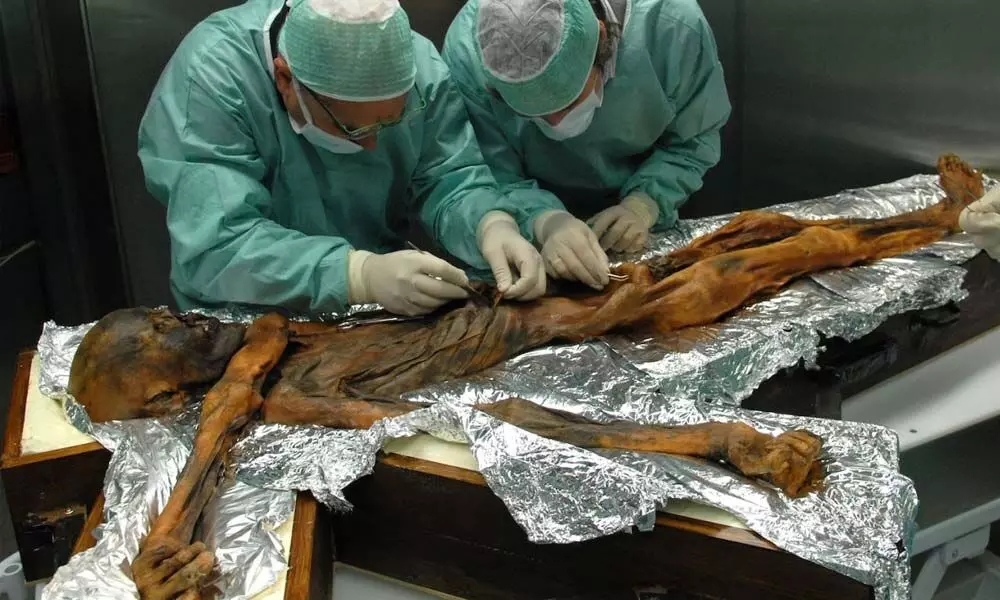'Otzi' The Iceman Is Believed To Be One Of The Greatest Discoveries Of Twentieth Century

Researchers examining Ötzi's mummy. (Image credit: South Tyrol Museum of Archaeology\Eurac\M. Samadelli)
- The well-preserved, 5,300-year-old mummy known as Otzi the Iceman was discovered on a glacier high in the Italian Alps in 1991, causing an international sensation.
- The discovery of Otzi is considered as one of the greatest archaeological discoveries of the twentieth century.
The well-preserved, 5,300-year-old mummy known as Otzi the Iceman was discovered on a glacier high in the Italian Alps in 1991, causing an international sensation. The discovery of Otzi is considered as one of the greatest archaeological discoveries of the twentieth century.
The naturally mummified individual named as Otzi by the press. He was discovered in the mountains above the tztal Valley has piqued public interest and drawn professional scrutiny as his mummified exists, the clothes he wore, and the artefacts he carried have been studied over the years.
Katharina Hersel, a spokesperson for the South Tyrol Museum of Archaeology in Bolzano, Italy, where tzi is housed, stated that the first time, they get the opportunity to know a Copper Age individual who died in the same circumstances as they lived. Moreover, like with many archaeological discoveries, the account of his finding is one of incremental knowledge. Otzi has slowly revealed his secrets through meticulous and detailed study over time.
In September 1991, two German hikers encountered the Iceman while traversing the Tisenjoch Pass at an altitude of 10,530 feet (3,210 metres) above tztal Valley in western Austria. The hikers were skirting a glacier on the Austrian-Italian border while they observed a human upper body protruding from the ice. The mummy was discovered on his stomach, stretched. The left arm was angled sharply to the right and tucked beneath the chin. That summer had been unusually warm, and the high temperatures aided in the discovery of tzi's bones. A warm Sahara breeze had blown, bringing sand to the glacier where the Iceman was trapped.
The German hikers notified Austrian authorities, who presumed the body was the result of a mountaineering accident. This notion spurred a rushed attempt to extricate the body from the ice the next day. Regardless of the fact that neither of the rescuers were trained archaeologists, they attempted to dig tzi out of the ice with axes and jackhammers. Parts of the mummy were destroyed in the process, such as the left hip and thigh, as well as a handful of his instruments, including his bow.
The mummies was flown off the mountain by helicopter, and the iceman was taken to the Institute of Forensic Medicine at Innsbruck Medical University in Austria. The remains had been preserved by the ice through a natural mummification process. Otzi's tissues were then subjected to a radiocarbon examination, which revealed that he was even older than 4,000 years. The iceman was roughly 5,300 years old, dating to 3300 B.C., according to radiocarbon dating, which detects carbon 14, an isotope, or form of carbon.
This indicated that Otzi lived throughout the Copper Age, a period of history that occurred between the Neolithic (or New Stone Age) and the late Bronze Age.
Next Story




















